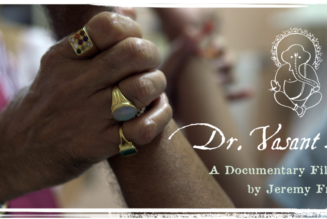“Who are you? “
Understanding The Prakruti/Vikruti Paradigm Of Ayurveda
By Sarah Devi Otto-Combs
Many of us have begun our forays into Ayurveda by reading various books and articles on the subject. This mode of learning can yield moments of great clarity and insight into who we each are as individuals, followed by confusion as we wade through the symptomatology attributed to various doshic imbalances. These “aha!” moments followed by “what?” are related to the foundational understanding of prakruti and vikruti that is necessary to fully understand the paradigm of Ayurvedic medicine and diagnosis.
Are you new to Ayurveda?
Click Here To Learn More About Ayurveda & The Wisdom Of The Doshas
To understand our unique constitution, we must first determine what our “prakruti” is, or rather, our constitution at birth. While many say that you can’t truly know a person’s prakruti without reading their pulse (which I am in agreement with), we can get an idea of our constitutional makeup through self quizzes found in many books on the subject. This means we look at things like bone structure, how your body holds weight (thin to chubby), color of hair, and your general nature (competitive vs. anxious vs. passive, etc.) over your whole life, i.e. more permanent aspects of your way of being.
Vikruti – Your Currrent State
This is in contrast to determining your “vikruti”, which is your current state or ratio of doshas, literally defined as “imbalance”. Here we look at fluctuations in weight, quality of skin and hair, energy levels, and our emotional status, to name just a few examples. 99% of us are imbalanced in some way or another, with the 1% who are categorized most often as saints and enlightened beings. In my lineage of Ayurveda, we compare these two using numbers. For example, if someone has a birth constitution, or prakruti, of Vata 1, Pitta 3, Kapha 2, but a vikruti of Vata 2, Pitta 3, Kapha 2, we would see that this person has elevated vata, or a vata vikruti, though we consider them to be a Pitta dominant individual.
Seems straightforward, right?
Well, not always. What may be confusing is that we can often have doshic imbalances that are not related to the dominant dosha of our prakruti. This may be unclear from much of the literature people use at home to determine their Ayurvedic constitutions. For example, I had a friend who was quite clearly a pitta-kapha type constitution, who clearly also had a vata type imbalance. I told her that she was vata, something she didn’t relate to because she was only identifying herself with her prakruti, instead of her current state, or vikruti.
“Oh, You Are So Vata!”
Confusing Point Number Two ~ Semantics!
When referring to the doshic state of others, we are often guilty of saying things like,”Oh, you are so vata”, without referencing whether or not we are referring to a person’s prakrti or vikrti. This can leave the average person who has little to no formal Ayurvedic education feeling very confused, and with good reason! No wonder my friend didn’t relate to my declaration that she was vata, because every book she had read described her prakruti as Pitta and Kapha, and rightly so. I wasn’t clear that it was her vikruti that was being referenced.
What does this mean for the average person who wants to understand their Ayurvedic constitution? It means that we need to take a look at our current physical and mental makeup as compared to our historic physical and mental status to understand our foundational state vs. “imbalances”. This is best done with the guidance of an Ayurvedic practitioner, and here is an example of why …
A Practical Example …
A client may come to us wanting to balance pitta or kapha dosha, when in fact it is vata that is wreaking havoc within the body, . This is a very important point of differentiation and without this understanding, we may manage the underlying cause improperly, only aggravating the underlying imbalance. What happens if someone identifies themselves as kapha through self diagnosis and starts to follow a kapha pacifying diet and lifestyle when in fact they have a vata vikruti or vata imbalance?
This would serve only to exacerbate rather than remedy the feelings of ill health they may be experiencing, as pacifying kapha would cause them to follow a vata aggravating diet and lifestyle. As with any journey, a knowledgeable guide can save us from many wrong twists and turns, which is why it is so important to consult with a professional so we don’t get lost in the maze of wrong diagnosis. Ayurveda is a profound art that can yield great healing and understanding of self, but only if properly understood.
About The Author

Sarah Devi Otto-Combs uses the Ayurvedic paradigm of constitutional analysis to help her clients achieve the foundation of good health that we all deserve and desire. Using Ayurvedic principles, she helps her clients to rectify both recent and long lingering imbalances, that they may live life to its fullest and with joy.
“There is so much to be gained through understanding ourselves through the lens of Ayurveda, and I am here to guide my clients through that process. My hope is that the aforementioned may serve as a guide to deeper understanding of this paradigm, as this is also the foundation of how we treat clients as Ayurvedic practitioners.” In addition to practicing and studying Ayurveda, Sarah Devi is a student of Odissi classical Indian dance. She is also the co-proprietor of Keeper of the Ink, an all natural tattoo aftecare product made in the Pacific Northwest. Feel free to contact her with any questions or comments.








